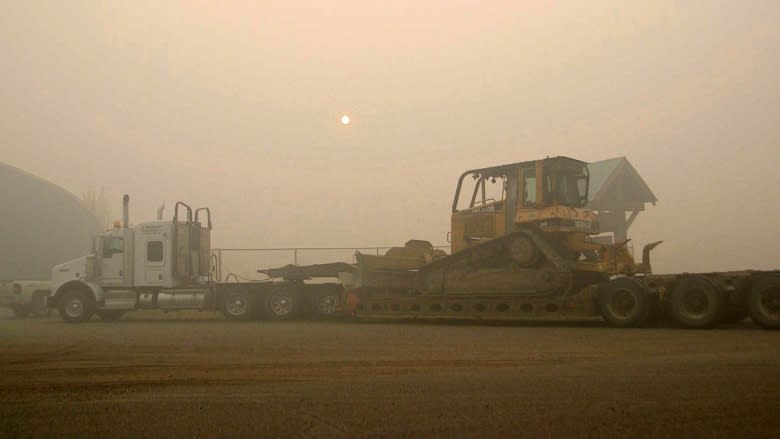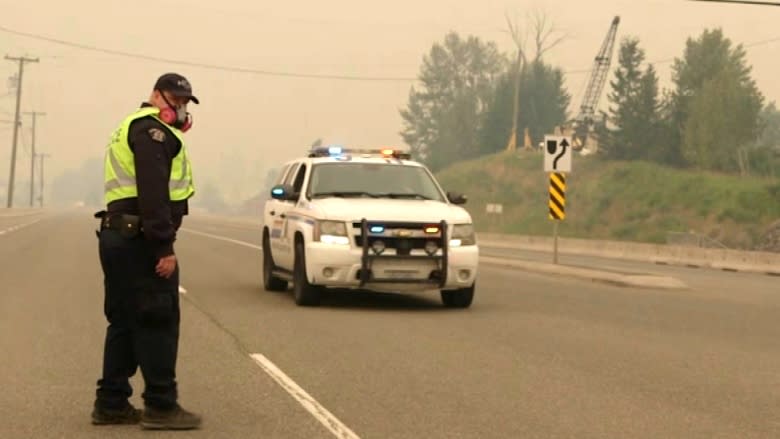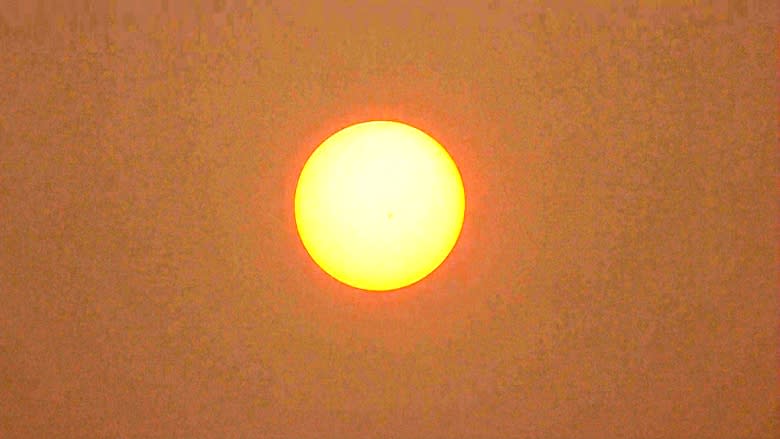Health risk from smoky air hits off-the-scale highs in Williams Lake
Smoke from wildfires burning near Williams Lake has caused the B.C. city's air quality to deteriorate to the point where meteorologists are asking residents to avoid going outside.
By about noon on Tuesday, the health risk from pollutants in the Williams Lake air had risen to 36 — on an air quality health Index (AQHI) that normally only goes as high as 10.
"It's extremely bad air quality right now simply due to the forest fire smoke," Environment Canada meteorologist Matt MacDonald said.
"We recommend that anyone who can avoid outdoor exposure remain inside in air conditioned, properly filtered air, definitely avoiding outdoor activity."
According to the city's mayor, Walt Cobb, the deteriorating conditions Tuesday morning were obvious to anyone who stepped outside.
"You can't see much, let's put it that way. It's very smoky. The surrounding fires are bringing smoke in, so the visibility and the air quality is quite bad," Cobb told The Early Edition.
Most elderly residents and people with respiratory problems have already been evacuated from the city, he added. Everyone else remains on evacuation alert.
Wildfire smoke pushes into Alberta
Special air quality statements related to the wildfires have been issued by Environment Canada for the entire southeast corner of B.C., from the Similkameen in the south to the Chilcotin and Prince George in the north, all the way east to the Alberta border.
"It's actually pushing all the way into Alberta," MacDonald said. "All that smoke is gradually pushing east and northeastwards into the Rockies."
Though the situation is probably most serious in Williams Lake, Kamloops also saw an off-the-scale rating of 11 on the AQHI by Tuesday at midday.
"They started their morning off as not too bad in Kamloops, but as the wind picked up and brought the smoke into the area, conditions worsened," MacDonald said.
In contrast, Metro Vancouver was still seeing very low AQHI values on Tuesday — lower than most major cities across the country — thanks to winds that have largely blown to the east.
A scale of 1 to 10
According to MacDonald, the AQHI in Canada is typically measured on a scale of one to 10 because we don't normally see high concentrations of pollution in the air.
"We typically have pretty good air quality," MacDonald said. "Once we get into the eights and nines, there's a really high risk of air-quality-related illnesses."
But an AQHI of 36 isn't unheard of. For example, at the height of last year's devastating fire in Fort McMurray, Alta., the index reached as high as 38.
'An end to the forest fires is what we need'
The forecast calls for continued poor conditions, and there's only one real hope for the air quality to improve substantially in Williams Lake.
"An end to the forest fires is what we need, really," MacDonald said.
Typically, a good strong wind is all that's needed to cause pollution to disperse and air quality to improve. But that's not the case in a city surrounded by aggressive wildfires.
"In this case, because the pollutants are originating from forest fires, the more wind we get, the more that will aggravate the forest fires' behaviour," MacDonald said.




